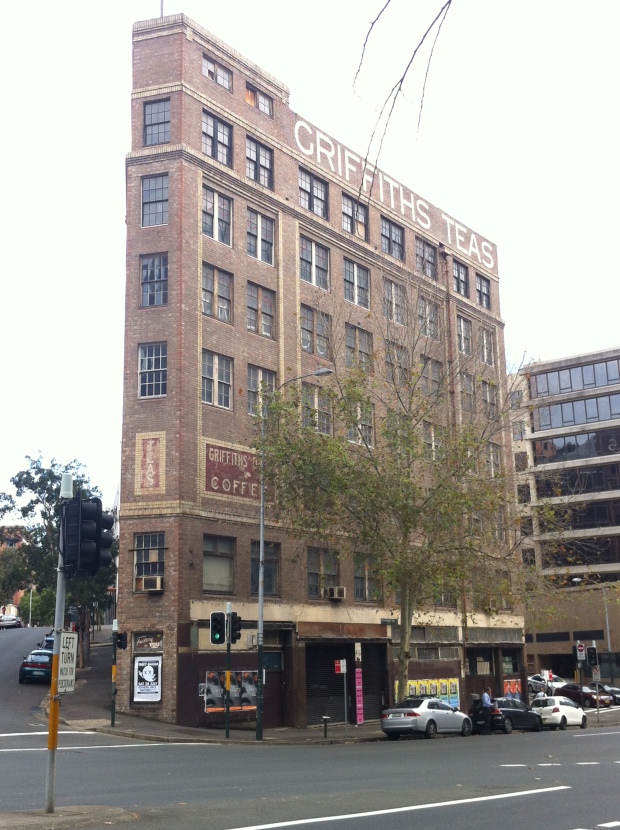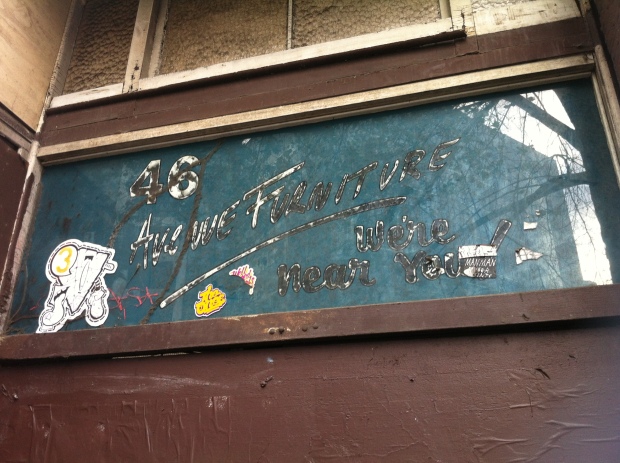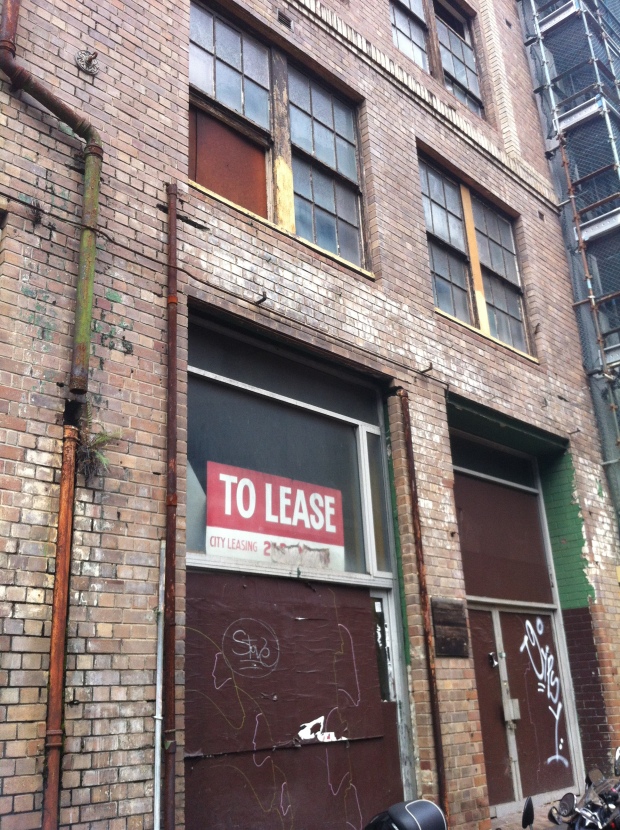Sharpie’s Golf House/Harmex Golf/Derelict – Sydney, NSW
Yes, the kitschy neon sign is what Sharpie’s Golf House is best known for, but there’s a bit more to it than that. For starters, the sign has been gone for years, having been taken down by the City of Sydney in 2007 for ‘refurbishment’. How long does it take to replace a few tubes?
The origins of Sharpie’s Golf House lie in the shop next door. It’s currently the empty shell of the former Gold Sun Supermarket, but in 1918, when Russian immigrant Harry Landis bought it, it was the Railway Loan Office, named for its proximity to Central Station. Landis moved into the current Sharpie’s address in 1923, and proceeded to divide the pawn shop into two sections: musical instruments and sporting goods, with an emphasis on golf.
After the Second World War, the sporting side was renamed The Golf House, and in 1964 the animated neon sign featuring the world’s best golfer (he always gets a hole-in-one) was erected after six years of construction. Until its removal, it was Australia’s second oldest neon sign (Melbourne features the oldest. You gonna take that lying down, Sydney?). The music business moved to Park Street in 1977, and the Golf House became Sydney’s premier golf store. This prestige attracted pro golfer Lindsay Sharp, who bought the shop in 1985 and renamed it after himself, forcing a change to the neon sign. That’s why the red ‘Sharpie’s’ part looks so out of place.

Sharp himself sold the ever-declining business in 1999, and in 2004 it became Korean-owned Harmex Golf, which limped on for a few years before closing its doors for good in 2007. Looking around the area it’s not a surprise – what was once a thriving business zone has become a wasteland with a bad reputation, filled with backpacker hostels and husks of businesses long gone. I’m not complaining; it’s great for what I’m doing. But it’s a sad look for the city, especially so close to the train line. Besides, it’s not like there are any golf courses in the immediate vicinity, so it’s not hard to imagine the golfing community getting fed up with making the trek out here every time they wanted a decent 5-iron. At least they made for good weapons when they stepped back out into the street.
The building today is a mess. Sharpie’s has been dulled. It’s dirty, covered in posters and falling apart. Even by Elizabeth Street standards it’s an eyesore. The part I’m having a hard time getting over is the indoor driving range. It had an indoor driving range! For how long? How did it work? I’ve played those virtual golf simulators indoors before, but surely this was set up long before those were around. It’s not even that long a building, how did Sharpie have room to get his drive on?

Do all those hole-in-ones count if he’s been playing the 19th hole all these years? Image courtesy SMH, 25 Aug 2003
It’s alleged that the sign sits inside, heritage listed, waiting for a spit and polish that’ll likely never come. There have been a few proposals submitted to the Sydney City Council to demolish the current site and reincorporate the sign into whatever is built in its place, but all have been declined. It’s not like they’re going to build another Golf House, so why not just leave it in the past? Why not take the opportunity to breathe some life back into this part of town, and create tomorrow’s heritage listed signs? For all the talk of preservation, Sharpie was quick to flush a 20-year-old sign down the toilet to remake it in his image. It’ll likely go the way of the Regent Theatre on George Street, and we’ll be able to live in Sharpie Tower in 20 years time. There’s something to look forward to.
Electricity House/Bank of China – Hurstville, NSW
The St. George County Council was established in 1920 to control the distribution of electricity within the Municipalities of Bexley, Hurstville, Kogarah and Rockdale, and was the first of its kind in Australia. In 1939, this building was constructed for the St. George County Council, presumably as a way of showing off just how fancy and powerful the Council was. During the early years of the SGCC, it was reported that St. George residents enjoyed the cheapest electricity in the country.
By 1963 it appears that most of the county’s electricity was being distributed right to this building, what with all the neon signs. Absolute power corrupts, so to speak. The St. George County Council enjoyed its name up in lights until 1980, when it was amalgamated with the Sydney City Council, itself rebranded in 1991 as Sydney Electricity and in 1996, EnergyAustralia. Now, St. George residents pay too much for electricity just like the rest of us.
Today the building has become a branch of the Bank of China, among other things, and doubtless many electricity bills are paid here. They’ve still got the neon happening there in the bottom right, perhaps just to prove that they can. It’s for a dental clinic, not a place you often associate with neon signage. The clock is a poor facsimile of its predecessors, too; also, it doesn’t work.
It’s gotta be a kick in the tablets when you can only get the ex-Minister for Works & Local Government to unveil your building. Spooner, a Conservative, had resigned as Minister a few months earlier after publicly describing that year’s State Budget as ‘faked’. He was also responsible for regulating the appropriate cut of mens bathing suits, insisting on the full-length one-piece. Sort of like the Tony Abbott of his day, in that way.


























